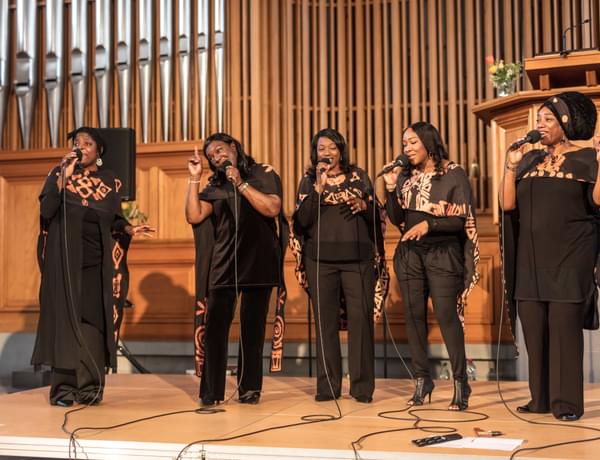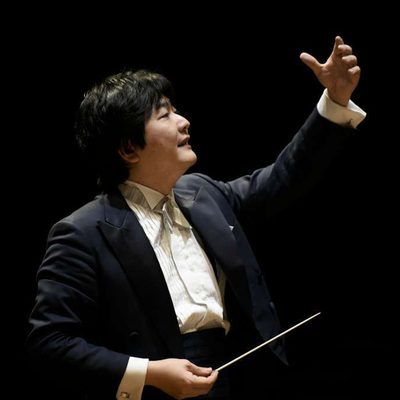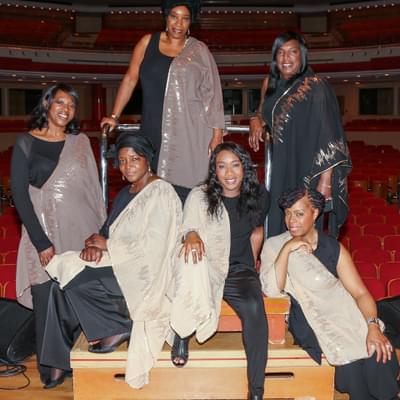CBSO Explores: the New World Symphony

Full programme
- Dvořák, Symphony No.9 (New World) (40mins)
- Traditional, African American Spirituals
Performers

Kazuki Yamada
Conductor
Linton Stephens
Presenter
Black Voices
Introduction
Tonight’s symphonic work, Dvořák's No.9, is remembered by many (of a certain age and over) for its brief appearance in a bread advert.
The excerpt used from the second movement is based on five notes. Not just any five notes, but notes which were the building blocks of the genre and inspired the symphonic tune: the African-American spirituals. This body of around 7000 songs tell the story of real life experiences and hopeful expectation, expressed through music which is empathetic, emotive, and sometimes ecstatic, fusing the African sounds and communal traditions of communicating information orally, through call-and-response and spontaneous interjections from singers.
Sung from the depths of the soul, the hauntingly beautiful melodies, largely built on the five note pentatonic scale, convey a yearning for consolation and comfort on the one hand (as expressed in such songs as Balm In Gilead, Sometimes I Feel Like A Motherless Child), and a yearning and determination to be free on the other (as expressed in such songs as Oh Freedom, and Swing Low).
Often misunderstood as ‘light’ music, spirituals were songs of resistance, containing lyrics which spoke honestly and genuinely of a deep faith and spirituality. Dignity was fundamental, and for many there was a feeling that the freedom of death was better than living without freedom; this was conveyed in such lyrics as “before I’d be a slave I’d be buried in my grave and go home to my Lord and be free”. The idea of angels and a chariot coming in order to carry the oppressed ‘home’ beyond the “river” - a metaphorical symbol of death, as well as a reference to the waters which separated southern states from northern states and Canada - where freedom was waiting. The arrangements endeavour to capture the genre’s heart, pain, longing, and hope.
I’ve been privileged over the years to write for and collaborate with the Black Voices collective, which often performs as “five notes”, carrying an all-important “soul” message. The spirituals' arrangements are based on anecdotes and seek to find the voice and emotion - the melancholic moans, the cries, the comfort, the shouts - of the real lives who lived through the experience.
Ken Burton
Composer, Arranger
Programme notes
Antonín Dvořák’s Symphony No. 9, titled “From the New World," is a cultural link between Europe and America. This piece celebrates fresh experiences and stands among the most beloved works in classical music. It is rich with unforgettable melodies, exquisite orchestration, and deep emotions. For over a century, it has charmed audiences, appealing to classical music enthusiasts and newcomers.
Meet Antonín Dvořák
Antonín Dvořák was born in a small village in the present-day Czech Republic in 1841. From an early age, he showed a remarkable talent for music, but his journey was not straightforward. He played the viola in orchestras, gave piano lessons, and dedicated himself to his compositions.
His music, which fused the folk traditions of his country with classical styles, caught the attention of renowned composer Johannes Brahms, who aided Dvořák in getting published and launched him toward international recognition.
In 1892, Dvořák was invited to lead the National Conservatory of Music in New York City. During his time in America, he became captivated by the various musical styles he discovered. He immersed himself in Negro spirituals and developed a strong interest in Native American history and the folk music of European immigrants. These spirituals significantly impacted Dvořák, aiding in the composition of Symphony No.9, which represents both an old-world soul and an affinity for the new world.
The Symphony
First Movement: Adagio – Allegro Molto
The symphony opens with a mysterious, slow introduction, almost like the calm before an adventure begins. Then, suddenly, the orchestra bursts into action with a bold, energetic theme played by the horns and trumpets.
Second Movement: Largo
This movement serves as the symphony's core, showcasing one of classical music's most exquisite and haunting melodies. Performed by the English horn—a relative of the oboe—the melody embodies a soulful, wistful quality that evokes a yearning for home.
Third Movement: Scherzo – Molto Vivace
This movement is vibrant, playful, and packed with rhythmic surprises. Influenced by Czech folk dances such as the furiant, it features music that encourages foot-tapping.
Fourth Movement: Allegro Con Fuoco
The finale revisits themes from previous movements, weaving them together to bring the symphony to a victorious finish. The composition is vibrant and intense—"con fuoco” translates to "with fire"—featuring commanding brass fanfares and expansive strings. The closing moments surge, leaving the audience captivated and energised.
© Dwight Pile-Gray